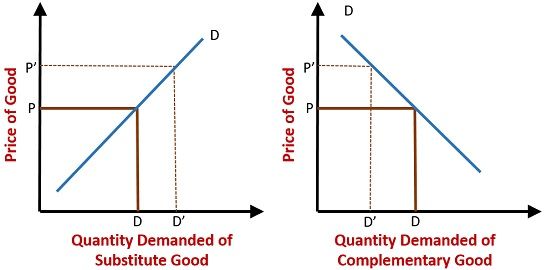 We all know that demand for a product is mainly affected by its price, but there are some other factors which can also affect its demand. One such factor is ‘Price of Related goods’, wherein the term ‘related goods’ means complements and substitutes. In simple words, Complementary Goods are the goods that complete each other. This means that such goods are used in conjunction with one other, which enhances their value. In other words, these goods have no value when they are consumed alone.
We all know that demand for a product is mainly affected by its price, but there are some other factors which can also affect its demand. One such factor is ‘Price of Related goods’, wherein the term ‘related goods’ means complements and substitutes. In simple words, Complementary Goods are the goods that complete each other. This means that such goods are used in conjunction with one other, which enhances their value. In other words, these goods have no value when they are consumed alone.
On the other hand, substitute goods are those goods that compete with each other. Meaning that these goods can be used as a replacement for another good. The relationship depicted by complements and substitutes are covered under ‘Cross Demand‘.
What is Cross Demand?
Cross Demand or cross elasticity of demand, determines the responsiveness of the consumers in the quantity demanded of one commodity, in case the price of another inter-related commodity increases or decreases, while other things remain constant. The sign, i.e. plus or minus, plays a significant role in the cross-price elasticity of demand, as it determines whether the commodities are complements or substitutes.
In this write-up, you will get to know about the difference between complementary goods and substitute goods.
Content: Substitute Goods Vs Complementary Goods
Comparison Chart
Definition of Substitute Goods
Substitute Goods, as the name suggests, are the goods that are perceived as an alternative to one another by the consumer, i.e. they can be used in place of each other in consumption. Such goods have the capability of satisfying human wants with the same ease.
When the two goods are developed with similar technology or contain the same ingredient, serve the same purpose and their price is approximately equal, they are called Substitutes. In such a case, an increase in the price of the product leads to an increase in the quantity demanded of its substitutes.
For example, there will be a rise in the total number of train ticket bookings, if there is a rise in the fare of aeroplane tickets.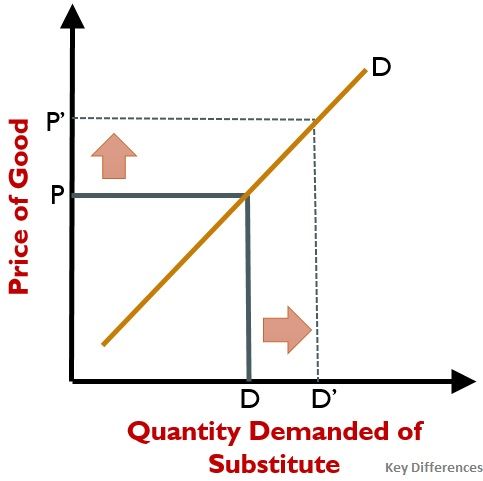
The cross demand curve is positive in the case of substitute products, which means it moves in the upward direction, indicating that more and more quantities of the commodity will be demanded when there is a hike in the prices of the substitute product. The price of the substitute product is assumed as constant. Hence, if there is an increase in the price of a particular commodity, the demand for its substitute will rise.
Points to Remember
If the cross-price elasticity of demand is positive, its size determines how closely the goods are capable of being substituted. Therefore,
- Cross elasticity between two items will be infinite when they are perfect substitutes.
- Cross elasticity between two items will be positive and large when they are close substitutes.
- Cross elasticity between two items will be positive and small when they are not close substitutes.
- Cross elasticity between two items will be zero when they are completely unrelated.
Also Read: Difference Between Demand and Quantity Demanded
Definition of Complementary Goods
Complementary Goods are defined as the goods which are used or consumed concurrently, so as to satisfy a particular want. This means that these goods are needed jointly, to serve the purpose.
For Example, A increase in the price of computer will lead to a decrease in the demand for the software package.
When there is a change in the price of a particular commodity, it will react oppositely to the demand for the other commodity, which is associated with the primary commodity.
Therefore, there is an inverse relationship between the price of a particular commodity and demand for its complementary item, while other things remain constant. And because the cross elasticity of demand between them is negative, the demand curve is downward sloping.
Points to Remember
The size of the cross-price elasticity of demand is an indicator of how strongly the two goods complement each other. Therefore,
- The goods are said to be weak complements when the cross elasticity between them is only slightly below zero.
- The goods are said to be strong complements when the cross elasticity between them is negative and very high.
Note: One must take a note of the fact that it is not always necessary that goods whose cross elasticity is negative are complimentary because when there is very strong income effect of the price change, then also the cross elasticity is negative.
Also Read: Difference Between Demand and Supply
Key Differences Between Substitute Goods and Complementary Goods
The points given below are important so far as the difference between substitute goods and complementary goods is concerned:
- Goods that are perceived by the consumer as the same, such that they can be used instead of one another and provide the same level of satisfaction, are called Substitute Goods. On the other hand, goods that are used by the consumer together and are of no use when consumed alone, are called Complementary Goods.
- While goods that are substituted have competitive demand, goods that are complements experience joint demand.
- When there is an increase (decrease) in the price of a related product leads to a rise (fall) in the quantity demanded of the main product, then the goods are said to be substitutes. So we can say that substitute goods have a direct relationship between them. On the other hand, when the reduction (hike) in the price of a related good, results in an increase (decrease) in the quantity demanded of the main product, then the goods are said to be complements. Hence, complementary goods have an inverse price and demand relationship.
- The cross-price elasticity of demand in case of substitutes is positive, because the rise in the price of a commodity increases the demand for another commodity, and causes the curve to shift right. But, the cross-price elasticity of demand in case of complements is negative. This is due to the fact that the rise in the price of a commodity decreases the demand for another, which leads to a leftward shift.
- In the case of substitute products, the demand curve is upward sloping, whereas, in the case of complementary goods, the demand curve is downward sloping.
- Substitute goods, for instance, tea and coffee are independent of each other, i.e. they can individually capable of satisfying a particular want. As against, complementary goods, for example, bread and butter, are interdependent on each other, which means that they are used along to satisfy a particular want.
Example
Substitute Goods
Suppose there are two goods Air Conditioner and Cooler, which are commonly used as substitutes by the consumer. The change in their prices and quantity demanded are given in the table below:
As you can see, the price of AC has increased, whereas the price of cooler is constant, leading to an increase in demand for coolers.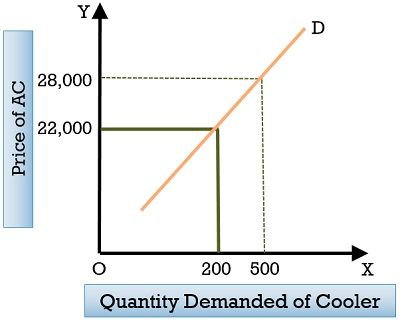
Complementary Goods
Suppose there are two goods Laptop and Battery, which are complements to one another. The change in their prices and quantity demanded are depicted hereunder:
In the given schedule, you can observe that as the price of laptops increases, the demand for laptop batteries decreases.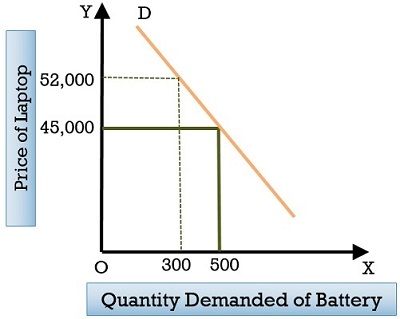
Conclusion
So, with the above discussion, it is quite clear that the change in the price of related goods has a great impact on the quantity demanded of the main product. While the price and demand relationship in the case of substitutes is directly proportional, it is inversely proportional in the case of complements.
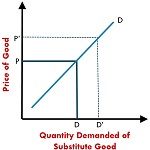
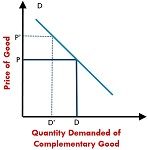
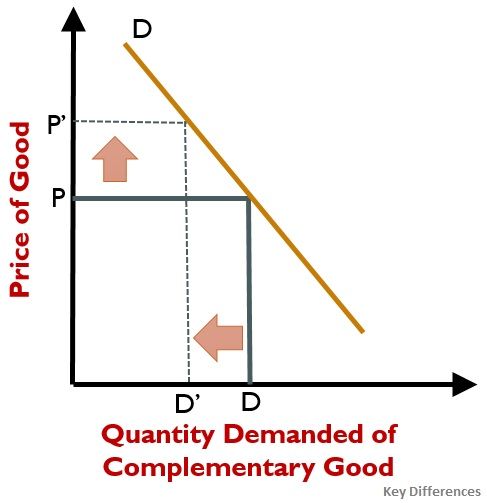






DUNCAN KASENA says
This is very helpful. Thank you so much.
Akash says
Very well explained .. Thanx
JUDITH NABAASA says
This is very helpful and well explained.
Thank you.
Judith